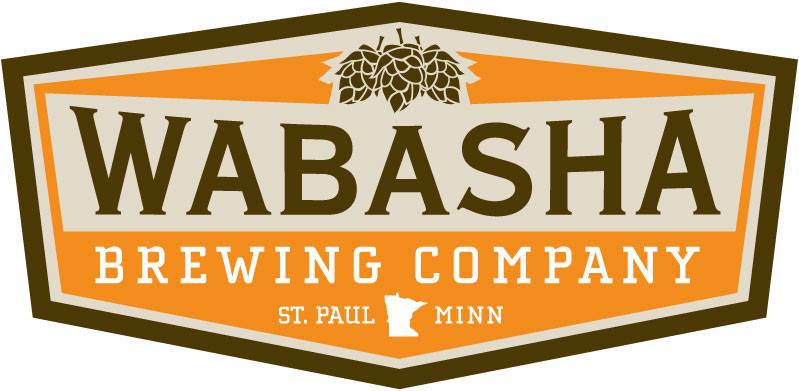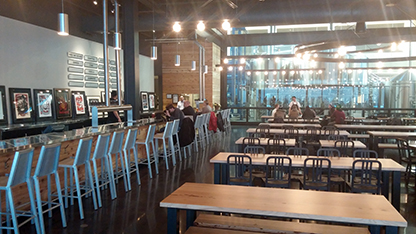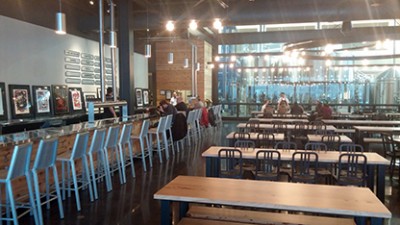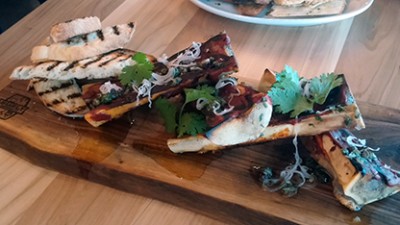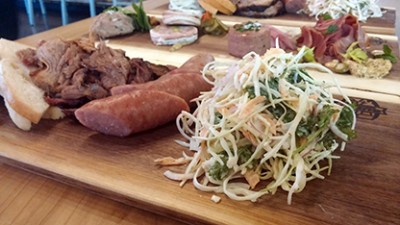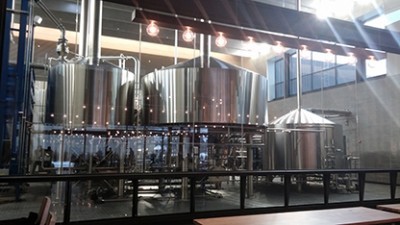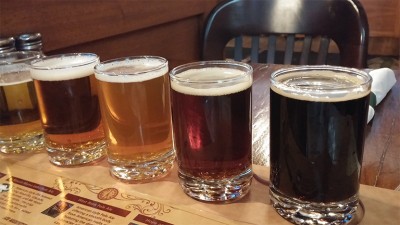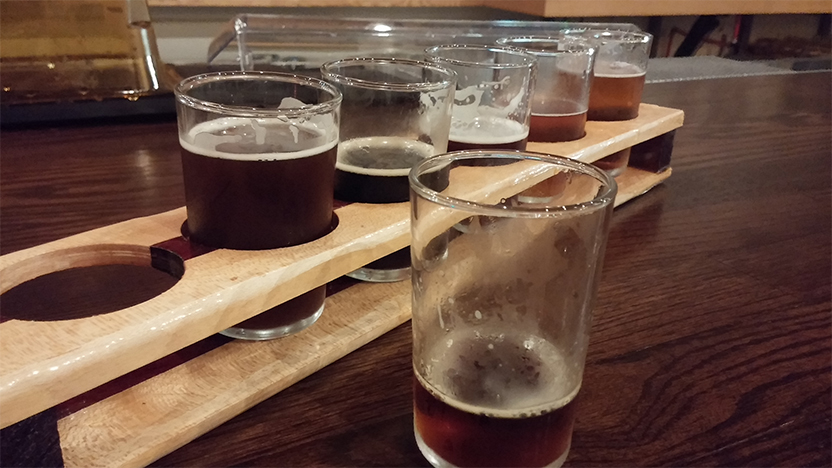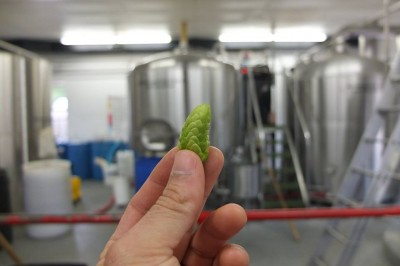It’s late on a Saturday night and you wander into a neighborhood bar with two of your friends. It’s a quaint little room dimly lit by overhead lights and small candles at each table. Your host escorts you to a table, you can’t hear her last words over the music, but her gesture towards the open chairs will suffice. She places the drink and food menus on the table in front of you before informing you that someone will be right with you.
Moments later, to your table arrives a server, clad in a black 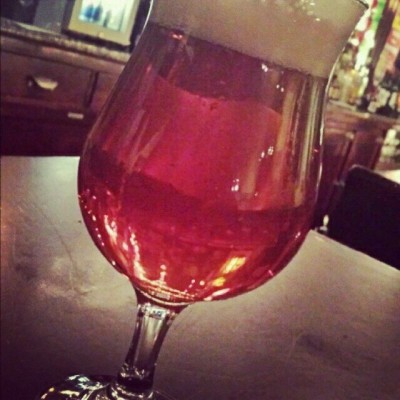 dress shirt, that proceeds to introduce himself while serving up cocktail napkins in front of each of you. You haven’t touched the drink menus yet, so you ask him for his opinion. This server actually the bar’s beer expert, who is highly trained to help you make your selection of beer and guide you through the process while providing you with information both about the style of beer and the brewery it comes from. He asks you about your taste preferences, offers samples that may or may not be what you’re used to and is just as pleased as you are to settle on a choice that’s perfect for the occasion and a perfect pairing to your meals. This is the job of a Certified Cicerone®.
dress shirt, that proceeds to introduce himself while serving up cocktail napkins in front of each of you. You haven’t touched the drink menus yet, so you ask him for his opinion. This server actually the bar’s beer expert, who is highly trained to help you make your selection of beer and guide you through the process while providing you with information both about the style of beer and the brewery it comes from. He asks you about your taste preferences, offers samples that may or may not be what you’re used to and is just as pleased as you are to settle on a choice that’s perfect for the occasion and a perfect pairing to your meals. This is the job of a Certified Cicerone®.
My biggest goal over the last few years was to achieve certification at this level and I finally have. As of October 31, 2014, I am a Certified Cicerone®. This level of certification has opened a lot of doors for me and now I want to share that experience with you. The next exam in Minnesota will be in July, so if there is someone who would like guidance preparing for this test or the Certified Beer Server exam, please feel free to contact me. I would love to help. Contact me @TCBeerDude or seanmcooke@gmail.com
I would also like to congratulate the other new Certified Cicerones® in MN that took the test with me in October. I know that the Four Firkins had two staff members and JJ Taylor had one team member become certified, so congrats to them and any others I missed.
Please note that the titles “Certified Cicerone®” and “Master Cicerone®” are protected certification trademarks of the Cicerone Certification Program.
Certified Cicerone®
For anyone working in a brewery or craft beer bar,  “Cicerone®” is a household term. The word comes from European museums, be they art or historical, where one may guide you through your tour and answer your questions, but may not give you the same rehearsed speech that the last guests received. They are there to customize your experience while providing any supplementary knowledge. I personally love this analogy. I would personally like to see more of a “tour guide” approach to your entire experience at a bar.
“Cicerone®” is a household term. The word comes from European museums, be they art or historical, where one may guide you through your tour and answer your questions, but may not give you the same rehearsed speech that the last guests received. They are there to customize your experience while providing any supplementary knowledge. I personally love this analogy. I would personally like to see more of a “tour guide” approach to your entire experience at a bar.
The Cicerone Certification Program out of Chicago has three levels of certification. Certified Beer Server is the first level, which many bartenders, servers and other jobs in the beer world receive their certification. Certified Cicerone® is the second level, which I equate to a Masters Degree in beer. There are roughly 30 at this level in the Twin Cities. Finally, the third level, Master Cicerone®, is analogous to an encyclopedia of beer knowledge. There are only 9 Master Cicerones in the United States and Canada.
If you want to go for the Certified Cicerone®, you should know that it is very difficult even for people who work in the best craft beer places in the industry. You will have to dedicate serious amounts of time even outside of work in order to get up to speed. If you have never worked in the industry, specifically with craft beer, this is going to be extremely difficult for you. The program is designed for bartenders, managers, servers, and other people on the service side of beer.
Preparation
The first rule of Certified Cicerone® training – don’t train alone. The second rule of Certified Cicerone® training is DON’T TRAIN ALONE!!! When I decided to set out to train for this exam, I got together a small group of friends who wanted to learn more about beer for different reasons. At the time, I managed the tap list at Zeke’s Unchained Animal with 20 local breweries on tap, each different styles of beer. I couldn’t have done it without a studying partner as well versed and driven as I was. My good friend, Gill, who is my homebrewing partner and manages the taps at Longfellow Grill, had a similar level of knowledge and we learned a lot together.
I would make sure that you are studying with a Certified Cicerone® or someone who has taken the exam. Their experience will allow you to know exactly how prepared you need to be compared to your current knowledge base. The Cicerone website offers a practice exam from 2008, the format and difficulty of which is very similar to the exam I took in July. If you feel like you can do the 2008 test and provide an educated answer to every question, then you are doing well, but I wouldn’t say that you are ready quite yet. It’s a good base. You should make flash cards of the most common beer styles and have 3 commercial examples of each style. That will help immensely.
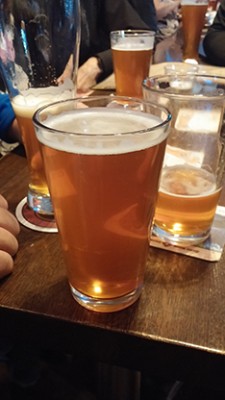
The main part of our studying was doing tastings. We had a rotating cast of bartenders, servers, beer sales reps, and brewers that participated in our study sessions and provided a nice variety of palates to have a discussion on the beers and their flavors. We spent 10 weeks going through beers by type and region and describing them. If you want to do this, I would strongly suggest reading my article on Active Tasting first and encouraging more detailed tasting discussions among a small group.
Also, you should brew. You should brew with someone who knows what they’re doing if you aren’t experienced. Much to my benefit, Gill had been homebrewing for over a year when we first met and was able to explain some of the more intricate processes of brewing that I could not have understood without participating. And no, brewery tours will not suffice. You need to do it yourself. Make sure that you are developing recipes using all-grain and not just copying recipes online so that you get used to choosing the different hops and grain that are available. It is very likely that you will have to come up with a recipe for a specific beer style on your Certified Cicerone® Exam.
After you are familiar with all the beer styles, you need to have long, in-depth conversations about beer pairings with someone who knows what they’re doing. For me, a good friend, Nate Walters, had taken the exam previously and knew what the Cicerone program was looking for as far as pairings and it was much more in depth than I had originally planned. I also have an article on Food & Beer Pairings if you need a starting point for your conversations. Make it into a game and see what you all can come up with while sitting around a bar table.
Lastly, you should do at least 2 off-flavor seminars at different times with different groups of people. This was incredibly important for me when I re-took the tasting exam.
The Exam
Holy crap! This is a tough exam. I’ve done a lot of really difficult things in my lifetime and this may have been the toughest 4 hours of my life. I originally took the full exam in July, taking a week off work to take the exam in Chicago. It requires full attention and concentration, so make sure not to have any major life events going on at the time. The written exam is not as intimidating as it seems if you’ve done the 2008 practice exam. There is an extensive section on short answer, which you should be able to breeze through without thinking too hard.
There is a section on pairings, which you must keep in mind is objective, but provide the best answer you can. Safe, easy pairings are totally acceptable. Then there is an essay where you pick a beer that pairs with a dish they describe. You  should make note of all the flavors in that dish, interpreting it how you see fit and describe all the flavors of your beer style and how they pair. For example, Chicken Fettuccine Alfredo has a lot of cream flavor, but you should make note of sweetness from the carmelization from the grill marks on the chicken. You can modify the dish, saying that it comes with a grilled piece of bread, lending toasty and nutty flavors or add a pinch of tomato and basil for a garnish, which may allow you to further explain how your choice of beers would work with those flavors as well. That you can play around and make the dish and the pairing your own, putting yourself more in the figurative driver’s seat than you could otherwise.
should make note of all the flavors in that dish, interpreting it how you see fit and describe all the flavors of your beer style and how they pair. For example, Chicken Fettuccine Alfredo has a lot of cream flavor, but you should make note of sweetness from the carmelization from the grill marks on the chicken. You can modify the dish, saying that it comes with a grilled piece of bread, lending toasty and nutty flavors or add a pinch of tomato and basil for a garnish, which may allow you to further explain how your choice of beers would work with those flavors as well. That you can play around and make the dish and the pairing your own, putting yourself more in the figurative driver’s seat than you could otherwise.
This sounds obvious, but read the directions carefully and make sure you cover all your bases on the essay questions. Many times, the essays have multiple questions in them and it is easy to gloss over a few easy points. The essays are your time to shine, so throw in any knowledge you have. The most important thing to note on the written exam is that most of us haven’t written anything extensive using pen and paper in a long time. It’s physically draining.
The Tasting Exam
Never in my life have I been more intimidated than I was walking into the room above the Chicago bar, where we did our exam in July. Waiting outside, I was with a group of complete strangers that had a ton of things in common and we became best of friends for the half hour in between the two parts of the exam. We were talking about the essays, our jobs, and our favorite beers. Then we were called into the room for the tasting exam. Everyone went silent. On each table sat 13 small, clear plastic cups, many with the same light gold hue. On them, small stickers with the letters ‘A’ through ‘L.’ We all knew this was coming, yet there was a palpable feeling of intimidation lingering in the air.
This section is extremely difficult and requires a very good palate. There’s a little bit of luck from time to time depending on the beers chosen to represent each style. For example, Salvator Doppelbock has a lot of fruity esters that can easily confused for a Dubbel. My best advice on the tasting…train your nose HARDCORE!!!! If you develop your ability to smell the differences in beer, you can save your palate from getting over-worked. On my tasting re-take, I didn’t try 3 of the beers until after I was done because I knew what they were by smell and did not want to tax my palate any more than I had to. Also, be sure to eat something very heavy that morning. You do not want the alcohol to affect your ability to taste.
I should also mention the demonstration portion. This is all about the service and maintenance side of things. You will be asked to demonstrate your knowledge on camera. This could be hooking up a keg, pouring a perfect beer, cleaning a faucet, how to tell if a glass is beer-clean, or something along those lines. Don’t fret too much about it, but know that it’s there and, again, read the directions and make sure you cover all the questions.
Grading
So, you finish the exam. The proctor will then tell you that you will get your results back in 4-6 weeks. After torturing yourself for 4 1/2 hours, 4-6 weeks feels like an eternity. The first 4 or 5 days will drive you crazy as you think back on the questions you know you missed or the details you should have included. After about 5 days, it will slowly fade into memory and you won’t worry so much. You’ll get an email a few weeks later explaining your scores broken down like this:
The tasting exam is a weighted average of the 12 questions from the tasting, which you must get at least 70% to pass. Then that is factored into the “Beer Flavor & Evaluation” category along with your answers from the written exam. Then the overall score is calculated as a weighted average of the 5 categories. After my first attempt, I passed the tasting portion with exactly 70%, but the overall score was just barely too low (77%), so I chose to re-take the tasting with the hopes of raising the full score a few percent to get me up to that 80% mark. I scored an 86% on the tasting the second time, which brought my overall score up high enough to receive my certification.
My biggest advice would be to make sure you can score very high on the written portion of the exam. If you need to take one portion over, it is much better to have to take the tasting over than the written. Retaking the written means studying styles, history, draft systems, brewing ingredients, etc. Instead, taking the tasting again means you only have to focus on a couple different parts of the exam (off flavors and style guidelines). I can attest from experience, it’s much easier and much less stressful.
Again, if you need any help along your journey to learn more about beer and become certified, I would love to offer you any advice I can and I know that the other Certified Cicerones® in town would say the same. Follow me on twitter @TCBeerDude
 news to craft beer lovers in the Twin Cities. The store served for eight years as a destination for craft beer lovers to make a pilgrimage to find beers that may have otherwise been unavailable at local liquor stores. Friday will be the last day of operation for the St. Louis Park store and the Oakdale store has already closed.
news to craft beer lovers in the Twin Cities. The store served for eight years as a destination for craft beer lovers to make a pilgrimage to find beers that may have otherwise been unavailable at local liquor stores. Friday will be the last day of operation for the St. Louis Park store and the Oakdale store has already closed.

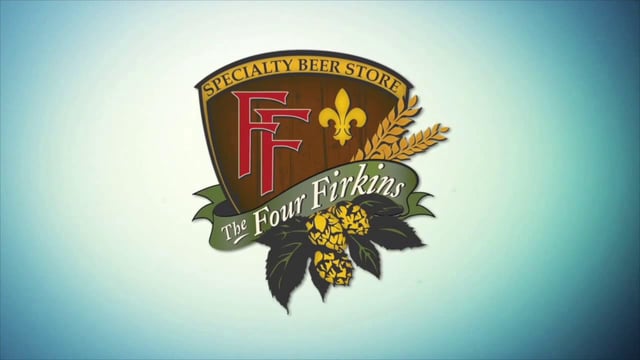
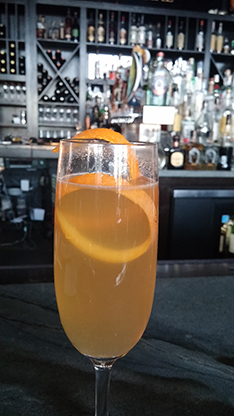
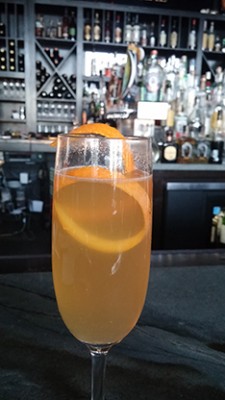
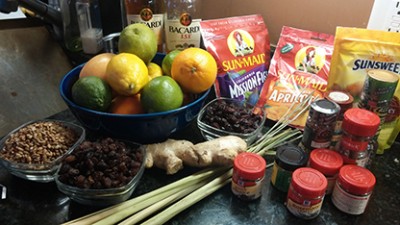
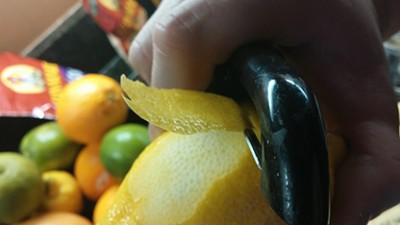

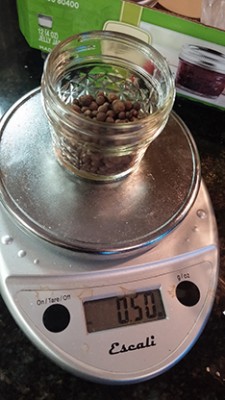 keeping track of the amount of the ingredients by weight. The actual amount doesn’t matter all that much, but will be useful later for developing recipes for the blends. You should put just enough liquor to cover the ingredients and cram as much of the ingredients into the liquor as possible. On my first run, each tincture tasted great individually, but the flavors weren’t strong enough when blended, so make sure to get a lot of your ingredients in there.
keeping track of the amount of the ingredients by weight. The actual amount doesn’t matter all that much, but will be useful later for developing recipes for the blends. You should put just enough liquor to cover the ingredients and cram as much of the ingredients into the liquor as possible. On my first run, each tincture tasted great individually, but the flavors weren’t strong enough when blended, so make sure to get a lot of your ingredients in there.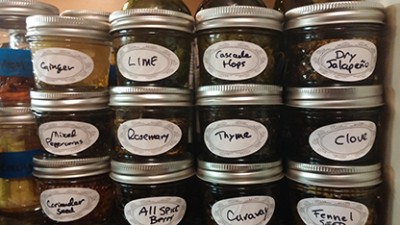
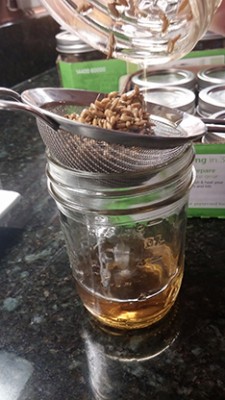
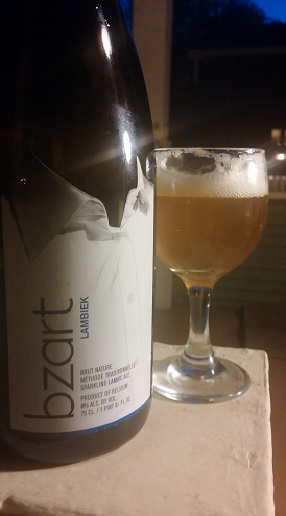

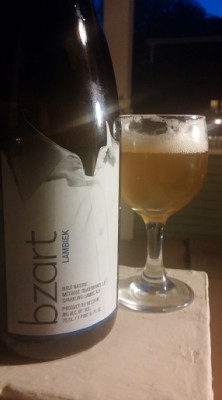
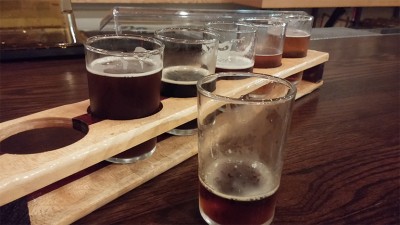
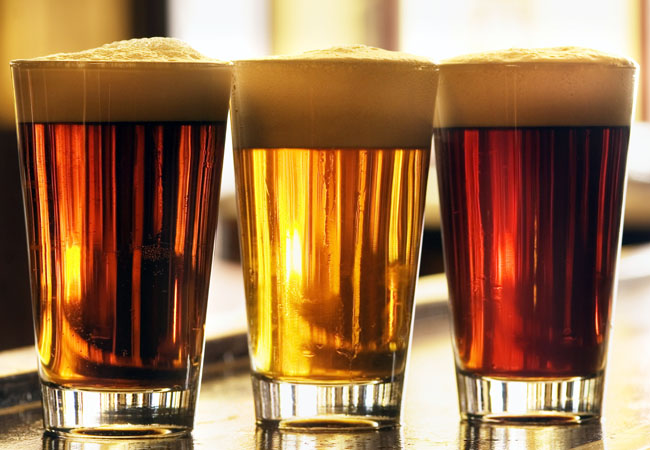
 dress shirt, that proceeds to introduce himself while serving up cocktail napkins in front of each of you. You haven’t touched the drink menus yet, so you ask him for his opinion. This server actually the bar’s beer expert, who is highly trained to help you make your selection of beer and guide you through the process while providing you with information both about the style of beer and the brewery it comes from. He asks you about your taste preferences, offers samples that may or may not be what you’re used to and is just as pleased as you are to settle on a choice that’s perfect for the occasion and a perfect pairing to your meals. This is the job of a
dress shirt, that proceeds to introduce himself while serving up cocktail napkins in front of each of you. You haven’t touched the drink menus yet, so you ask him for his opinion. This server actually the bar’s beer expert, who is highly trained to help you make your selection of beer and guide you through the process while providing you with information both about the style of beer and the brewery it comes from. He asks you about your taste preferences, offers samples that may or may not be what you’re used to and is just as pleased as you are to settle on a choice that’s perfect for the occasion and a perfect pairing to your meals. This is the job of a  “Cicerone®” is a household term. The word comes from European museums, be they art or historical, where one may guide you through your tour and answer your questions, but may not give you the same rehearsed speech that the last guests received. They are there to customize your experience while providing any supplementary knowledge. I personally love this analogy. I would personally like to see more of a “tour guide” approach to your entire experience at a bar.
“Cicerone®” is a household term. The word comes from European museums, be they art or historical, where one may guide you through your tour and answer your questions, but may not give you the same rehearsed speech that the last guests received. They are there to customize your experience while providing any supplementary knowledge. I personally love this analogy. I would personally like to see more of a “tour guide” approach to your entire experience at a bar. should make note of all the flavors in that dish, interpreting it how you see fit and describe all the flavors of your beer style and how they pair. For example, Chicken Fettuccine Alfredo has a lot of cream flavor, but you should make note of sweetness from the carmelization from the grill marks on the chicken. You can modify the dish, saying that it comes with a grilled piece of bread, lending toasty and nutty flavors or add a pinch of tomato and basil for a garnish, which may allow you to further explain how your choice of beers would work with those flavors as well. That you can play around and make the dish and the pairing your own, putting yourself more in the figurative driver’s seat than you could otherwise.
should make note of all the flavors in that dish, interpreting it how you see fit and describe all the flavors of your beer style and how they pair. For example, Chicken Fettuccine Alfredo has a lot of cream flavor, but you should make note of sweetness from the carmelization from the grill marks on the chicken. You can modify the dish, saying that it comes with a grilled piece of bread, lending toasty and nutty flavors or add a pinch of tomato and basil for a garnish, which may allow you to further explain how your choice of beers would work with those flavors as well. That you can play around and make the dish and the pairing your own, putting yourself more in the figurative driver’s seat than you could otherwise.
